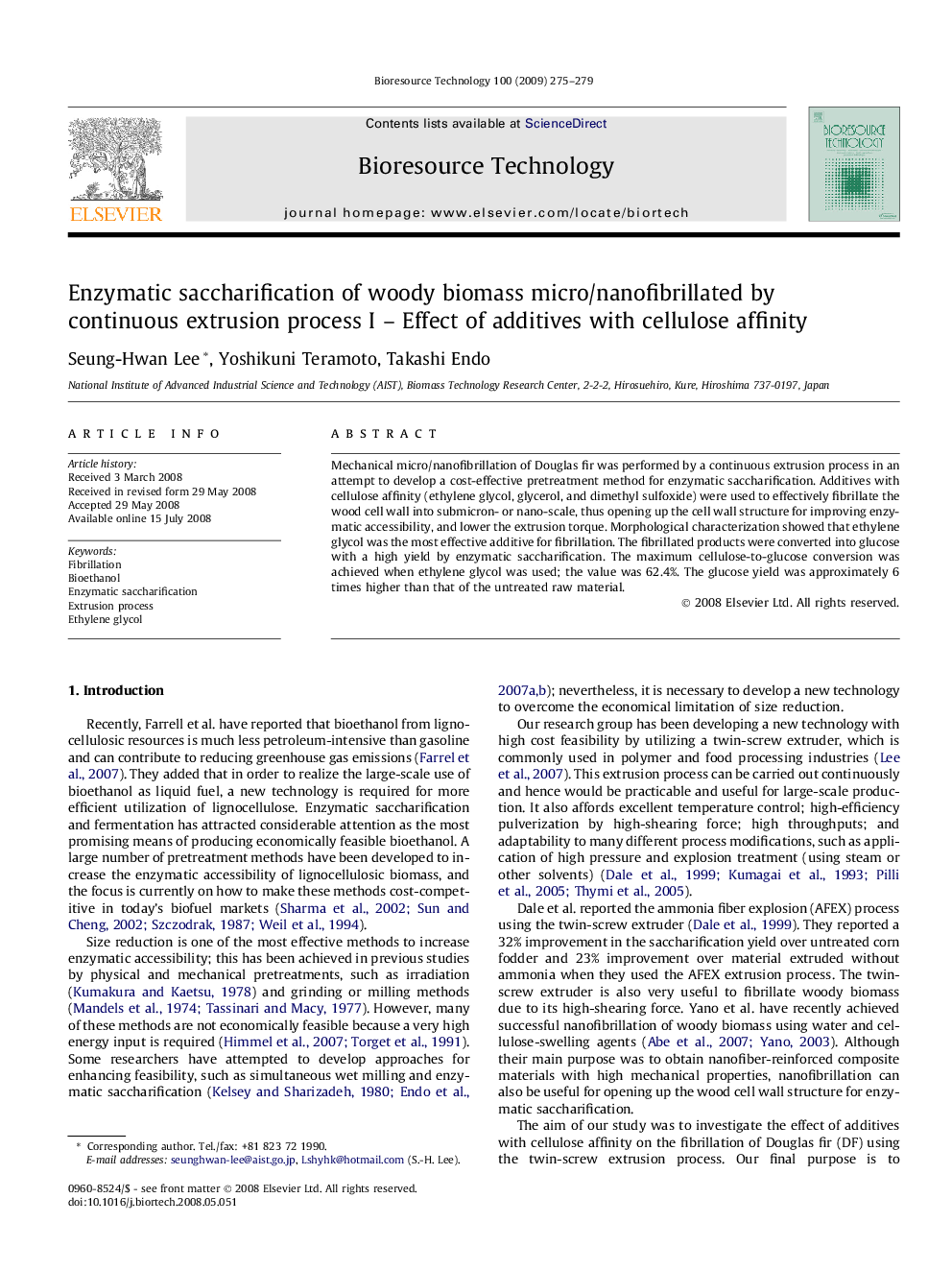| Article ID | Journal | Published Year | Pages | File Type |
|---|---|---|---|---|
| 684257 | Bioresource Technology | 2009 | 5 Pages |
Mechanical micro/nanofibrillation of Douglas fir was performed by a continuous extrusion process in an attempt to develop a cost-effective pretreatment method for enzymatic saccharification. Additives with cellulose affinity (ethylene glycol, glycerol, and dimethyl sulfoxide) were used to effectively fibrillate the wood cell wall into submicron- or nano-scale, thus opening up the cell wall structure for improving enzymatic accessibility, and lower the extrusion torque. Morphological characterization showed that ethylene glycol was the most effective additive for fibrillation. The fibrillated products were converted into glucose with a high yield by enzymatic saccharification. The maximum cellulose-to-glucose conversion was achieved when ethylene glycol was used; the value was 62.4%. The glucose yield was approximately 6 times higher than that of the untreated raw material.
